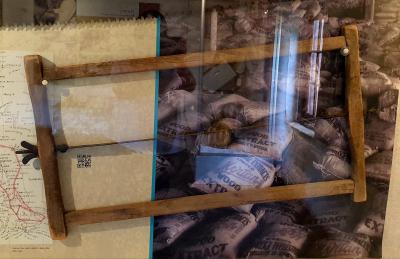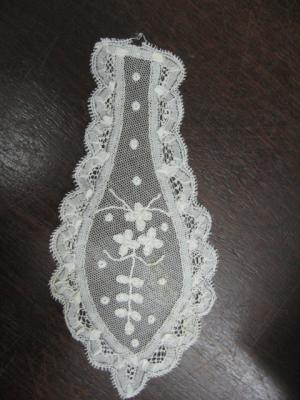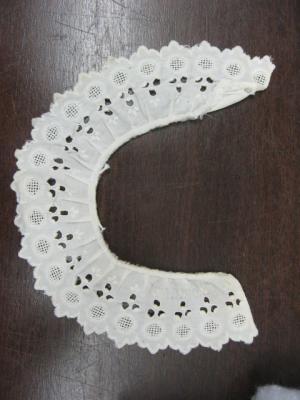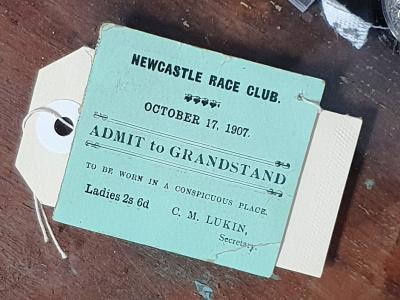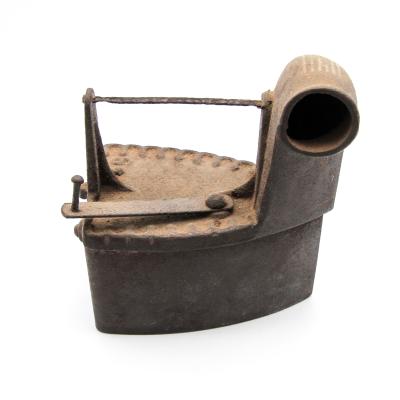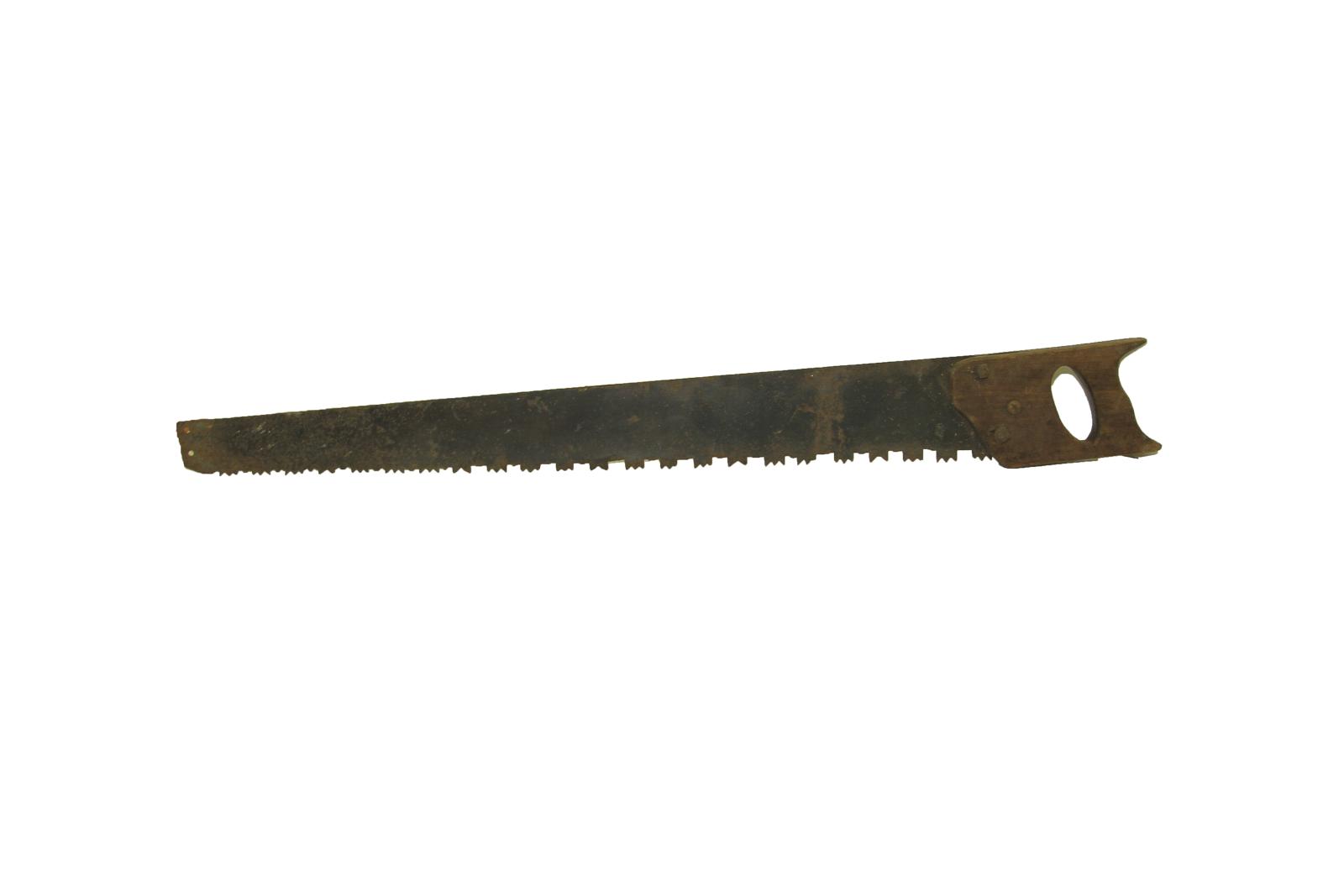HAND SAW
Cross cut hand saw.
Large hand saw with wood handle.
Handle is attached by three fastenings.
Narrow end of saw has two man made holes
Cross cut hand saw from the museum collection, with cutting edge showing a combination of the Great American Tooth Pattern and the M Tooth Pattern.
The history of this object is unknown.
Details
Details
Great American Tooth Pattern: This pattern consists of a group of three teeth, each set alternately, separated by a gullet. It is sometimes called a crown tooth because of its shape.
The M tooth pattern dates back to the 1400s in southern Germany. This tooth is designed to cut the fibre, break the severed fibre, and clean out the shavings. The tooth pattern consists of pairs of teeth set alternately and separated by a gullet. The outer edges of the teeth (the legs of the M) are vertical and act like rakers. The inside edges of the M are filed to a bevel, making a point.
Both these blade patterns are best suited for cutting dry, medium-to-hard woods.
